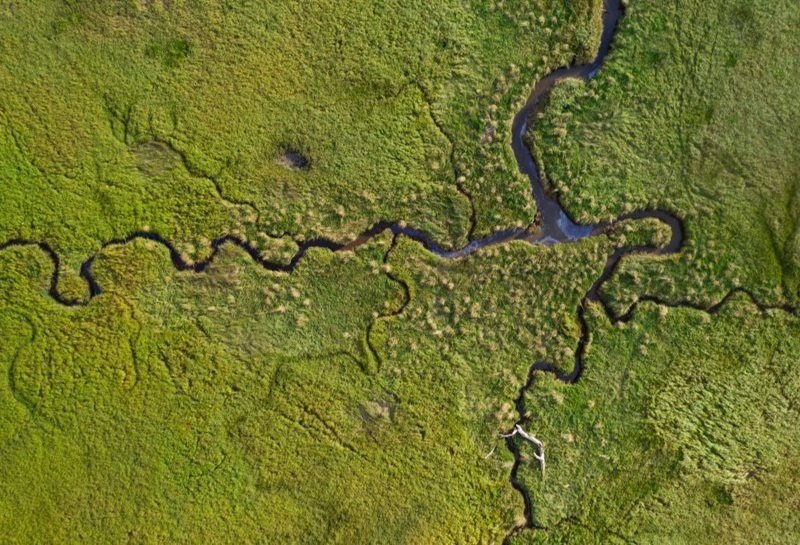Why Wetlands are Crucial to Biodiversity and Sustainability
Wetlands have always played a special part in my environmental advocacy as the Ballona wetland was the first natural ecosystem I spend the day volunteering in. My elementary class took a school field trip out there where we got to pull out ice plants which are an invasive species to the wetland. As a child, who grew up in Los Angels run by cars and concrete, this place seemed like peace. I always loved nature and the quiet it brought but this place felt like a safe haven for the wildlife that no other land in the city provided. From that day on I noticed the hard work and continuous fight it took for the community to keep it safe from development. And over time parts of the wetland did get developed from the once 2,000 acres to today at 600 acres of wetland.
This is why I write this post. So we, as a collective community can continue to understand why it’s so important for us to fight and preserve wetlands around the world.
What is a Wetland?
Wetlands are often overlooked, but play a crucial role in maintaining a healthy and balanced environment. Wetlands are categorized into five categories from “marine (ocean), estuarine (estuary), riverine (river), lacustrine (lake), and palustrine (marsh). While common names for wetlands include marshes, estuaries, mangroves, mudflats, mires, ponds, fens, swamps, deltas, coral reefs, billabongs, lagoons, shallow seas, bogs, lakes, and floodplains.” These different categories of wetlands can vary widely due to differences in soil, topography, climate, water chemistry, and vegetation. (Sorce: NOAA)
These areas, characterized by waterlogged soil and aquatic vegetation, are not just habitats for diverse wildlife, but they also provide a range of benefits to both the local community and the planet as a whole. From protecting against natural disasters to mitigating the effects of climate change, wetlands are vital to our survival. In this blog post, we'll explore why wetlands are so important for the environment and why we should do all we can to protect them.
Protecting Local Wildlife
Wetlands provide a unique and diverse habitat for a wide variety of wildlife. From migratory birds to reptiles and amphibians, these areas are critical to the survival of many species. Wetlands also serve as breeding and nursery grounds for fish and other aquatic life. By preserving wetlands, we ensure that these species have a safe and stable place to live and breed, helping to maintain the balance of ecosystems and biodiversity.
In the United States, “at least 150 bird species and 200 fish species are wetland-dependent. About 900 terrestrial animal species use wetland habitats of the United States periodically throughout their lives for breeding, foraging, or other activities.” making this ecosystem vital to their survival.” (Sorce: NRCS)
Preventing Natural Disasters
Wetlands act as natural sponges, absorbing excess water during heavy rains and slowing the flow of runoff. This helps to prevent flash floods and reduces the damage caused by storms and hurricanes. By preserving wetlands, we can protect communities and infrastructure from the devastating effects of natural disasters and provide shoreline erosion control.
Combating Climate Change
Wetlands play a crucial role in mitigating the effects of climate change by storing and releasing carbon. “Wetlands store carbon within their plant communities and soil instead of releasing it to the atmosphere as carbon dioxide.” (Sorce: EPA) Salt marshes, mangroves, and seagrass beds absorb large quantities of carbon dioxide from the atmosphere and store it through two important roles. Carbon sequestration — the process of capturing carbon dioxide and Carbon storage — the long-term confinement of carbon in plant materials or sediment. Due to this process, these types of habitats are known as carbon sinks.
“Current studies suggest that mangroves and coastal wetlands annually sequester carbon at a rate ten times greater than mature tropical forests. They also store three to five times more carbon per equivalent area than tropical forests.” While wetlands are a great source of capturing carbon, their destruction creates a huge problem for climate change. When wetlands are destroyed for any reason, we not only lose their ability for carbon sequestration but the carbon that has been stored is then released into the atmosphere. “Unfortunately, coastal habitats around the world are being lost at a rapid rate, largely due to coastal development for housing, ports, and commercial facilities.” (Source: NOAA)
Additionally, wetlands can help to regulate local temperatures and protect against the impacts of rising sea levels which will impact local communities developed at the coast.
Preserving Our Way of Life
Wetlands also provide numerous benefits to local communities, including water filtration, recreation, and economic opportunities. Many wetlands are used for fishing, hunting, and other recreational activities, providing both income and enjoyment to the local community. They also provide clean water for drinking, irrigation, and industry, helping to sustain our way of life.
Wetlands are essential to our environment and play a crucial role in maintaining a healthy and balanced planet. They protect against natural disasters, support local wildlife, combat climate change, and preserve our way of life. It is vital that we do all we can to protect and preserve these important areas for future generations. And every individual has to advocate for the protection of these ecosystems.








Earth Day is just one day, but your job is every day. Discover how to make your career more sustainable—without doing extra work—with small, powerful changes that make a real difference for the planet.